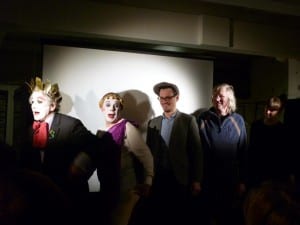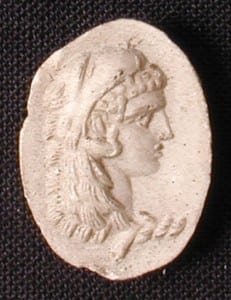LGBT History Month and Petrie Participation
By Debbie J Challis, on 20 February 2014
With the help of Camden LGBT Forum the Petrie Museum held its first LGBT History Month event in 2008; at that time – believe it or not – we were the only museum in Camden to hold a public event. Now February is a vibrant month for all kinds of events in museums and elsewhere exploring sexuality identity and history of expression. This video ‘We’re Going‘ from Camden and Islington LGBT History Month gives a great snapshot – see if you can spot the Petrie Museum!
I have been reflecting on the last seven years of events when I was making final changes to a chapter ‘Queering Display: LGBT History and the Ancient World’ for a volume Sex, Knowledge and Receptions of the Past (eds. Kate Fischer and Rebecca Langlands). In it I explore how recent social and legal changes affecting LGBT people has transformed the construction of knowledge around sex and sexuality in the ancient world through the display of material culture in museums. The Petrie Museum is a case study illustrating this transformation of attitudes to sexuality and how events are programmed to meet the public desire for more information on LGBT history.
In fact, the programme of events over the last 2 years have been affected by writing this (very academic) survey as it made me realise that, to a certain extent, the continued focus on certain key figures sometimes is in danger of repeating clichés. Often an object or figure from the past is ‘queered’ by the perspective of people looking at it as much as by the, often fragmentary, evidence around it / them. I discussed this with the Petrie Museum’s longterm collaborator on LGBT History month and PhD candidate at UCL John J Johnston.
Last year John J. Johnston put together ‘Every Good Thing’ on 26 February 2013 with a panel of prominent members of the gay community who choose objects that furthered their understanding of the ancient world and sexuality. The evening culminated in a cabaret performance of part of Get Hur, a mock historical musical hall take on the love story of Antinous and Hadrian, by artist Bette Bourne and Bloolips partner Paul Shaw. The idea was to define objects and figures from the ancient past through the identity of people who choose them an involve the audience.
This year, John is following the taxonomies theme set by Helen and myself at  the Petrie and put together an event ‘Defining Desire’ considering how sexuality has or not been classified. Fern Riddell, historian of sexuality in the nineteenth century, performer and museum consultant Tim Redfern and Jenn Grove, researcher at the Sex and History Project, University of Exeter will be presenting their takes on this with input from the audience tonight. The following week we will be screening episodes from Xena: Warrior Princess and Spartacus and asking the audience whether the sexuality portrayed is ‘main text or sub text?’
the Petrie and put together an event ‘Defining Desire’ considering how sexuality has or not been classified. Fern Riddell, historian of sexuality in the nineteenth century, performer and museum consultant Tim Redfern and Jenn Grove, researcher at the Sex and History Project, University of Exeter will be presenting their takes on this with input from the audience tonight. The following week we will be screening episodes from Xena: Warrior Princess and Spartacus and asking the audience whether the sexuality portrayed is ‘main text or sub text?’
My conclusion for the chapter asks how we can question heteronormativity more widely in museum displays (around the family for example) and challenge ourselves to provide informative public engagement that queers our perspectives on sex in the ancient world. Reflecting on the increased audience participation we’ve tried to build into LGBT Month 2013 and 2014 makes me wonder – shouldn’t more events (if not every one) be this participatory?
 Close
Close


